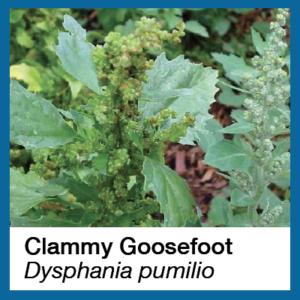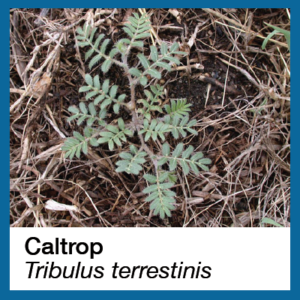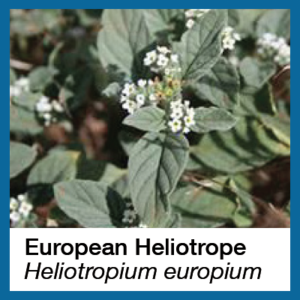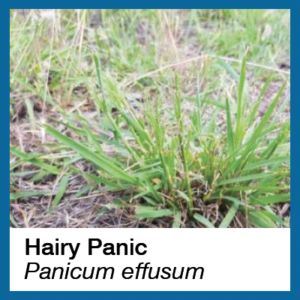Key Points
- Soil moisture will likely see weeds springing up in pastures and stubbles
- Weeds can be a great source of feed, but some can be toxic to livestock
- Mycotoxins are also a concern this summer due to spoilt crops
- Toxins can be diluted by feeding hay
- StockMins-Detox protects against the absorption of harmful toxins, assists with tissue repair and elevates immunity
Look out for toxic weeds when grazing pasture
Toxic effects in livestock when grazing weeds in the pasture is a reoccurring issue for producers with weed control both difficult and costly. Weed control and management is an obvious step towards reducing the risks involved, as is controlling where and when stock graze weed-affected pastures. There are however many scenarios where total aversion is difficult and that is where toxin-binding agents, such as StockMins-Detox come to the fore and prove their value.
Plant toxins can be harmful to livestock
Plant toxins are secondary metabolites that have largely evolved as defensive mechanisms to combat grazing pressure from animals. There are a vast number of different plant toxins that are of concern for ruminants when grazing weeds in pasture. Photosensitisation, jaundice, head, jaw, and eye swelling, and weight loss are all visible signs of plant toxicosis. These symptoms generally stem from a dysfunctional and damaged liver that can have long-term consequences for animal health, production, and welfare. The most commonly encountered weeds that cause these concerns in the region are Hairy Panic, Heliotrope, Caltrop, Pattersons curse, and Goosefoot.




Mycotoxins are also a concern
Bacterial toxins and mycotoxins are also naturally produced secondary metabolites created from certain fungal and bacterial species. There are many different types of mycotoxins and plant toxins, varying in their toxicity and lethality. Ruminants are less prone to mycotoxicosis compared to non-ruminants, however, their impact on animal health and production should not be understated. Mycotoxins can have a profound effect on the epithelial lining of the gut that can reduce immune function, and nutrient absorption and increase the risk of other pathogenic disorders (notably endotoxicosis from lipopolysaccharides).
Binding and neutralising toxins
StockMins-Detox assists ruminants grazing weeds in pasture, as it contains a high level of broad-spectrum toxin binders, bentonite, and other specifically targeted binding agents. The combination of these ingredients actively helps to bind and neutralise both mycotoxins and endotoxins in the gut before they can damage the gastrointestinal tract. In doing so, they help to sustain normal nutrient absorption and prevent immune activation caused by these degenerative changes. Bentonite a more widely used binding agent, is added for its unique clay properties allowing for the additional binding of toxins in the rumen.
In combination with these toxin binders, StockMins-Detox contains added sources of inorganic sulfur and molybdenum. Sulfur is added for its role in the detoxification of prussic acid in vivo to form thiocyanate which can then be excreted in the urine. Molybdenum is present to ‘mop up’ excess dietary copper that could otherwise lead to chronic or acute copper poisoning in animals consuming large amounts of toxic alkaloids (hepatotoxins). Damage from the ingestion of hepatotoxins can cause the liver to alter its normal function thereby accumulating high levels of copper. Under conditions of stress, stored copper can be abruptly released into the blood often resulting in mortality.
Elevating immune response and protecting the liver
Ingestion of various plant toxins, mycotoxins, and bacterial toxins will cause the immune system to become depressed further exposing the animal to other pathogenic disorders. The unique blend of antioxidants (vitamins A, D, and E and silymarin), minerals, and essential trace elements help to activate and regulate the immune response. Notably, silymarin acts pharmacologically as a “hepatoprotectant” and has the ability to directly nullify and prevent the formation of free radicals, maintain optimal redox balance in the cell, decrease inflammatory response and activate the production of protective molecules. The combination of these processes can help protect and repair the liver while simultaneously managing toxic burdens.
Assists in tissue repair
Prevention is the best form of management, however, more often than not the first overt sign of plant toxicosis in livestock is photosensitization. Common strategies to manage photosensitization are providing ample shade, moving stock to less offensive paddocks, and providing a diluting feed (hay or silage). The nutritional intervention has not been widely considered, until recently, as a viable management strategy but is understated. Specifically, elevating the dietary intake of organic and inorganic minerals such as zinc, phylogenies, and fat-soluble vitamins, particularly vitamin E have shown to assist in the repair of damaged tissue. StockMins-Detox utilises these key ingredients to help repair and limit tissue damage incurred when stocks are exposed to toxic weeds.
StockMins-Detox is the first product of its kind available for livestock grazing weeds in pasture and can reduce the effects of toxins in three distinct ways:
- Protecting against the absorption of a variety of harmful toxins in weeds
- Stimulates and supports normal liver function
- Assists with tissue recovery and repair.
For more information about the product, please contact one of the teams at AusFarm Nutrition Products or refer to our StockMins-Detox product summary.